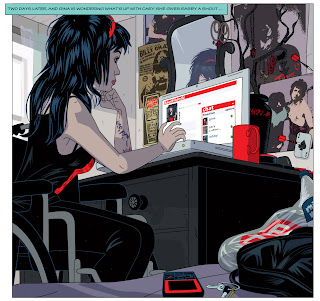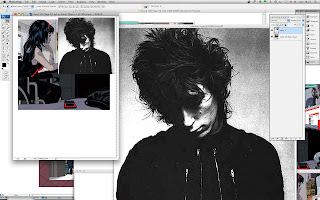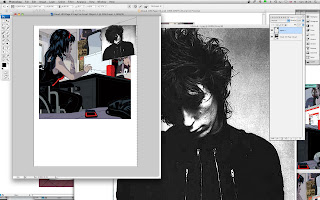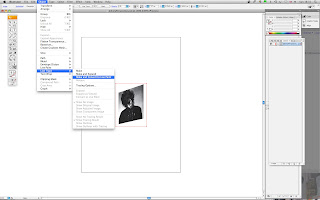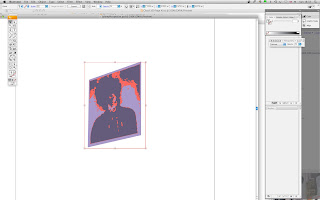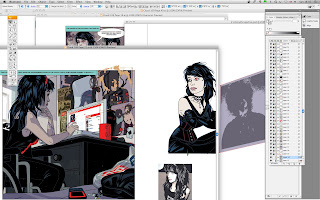 the time were considerable and the page rate would only make sense if I could actually turn the artwork around pretty niftily. Secondly I still had other avenues of work to maintain and if I got completely bogged down in the comic work (which I did find very rewarding) I would louse up on the rest of my illustration practice.
the time were considerable and the page rate would only make sense if I could actually turn the artwork around pretty niftily. Secondly I still had other avenues of work to maintain and if I got completely bogged down in the comic work (which I did find very rewarding) I would louse up on the rest of my illustration practice.Anyway as Dave Morris (the man behind the scripting of the epic adventure Mirabilis) expressed interest in seeing some of these pages, I've (ulp) finally dug out some samples which are moderately less embarrassing than the majority of the pages that I churned out. It was working on this strip that made me realize just how crap my figure work was and I have made sterling efforts ever since to try and redress this lamentable state of affairs.


Most comic strip artists it has to be said need to achieve a complete mastery of figure work before they can hope to express themselves fully, if you don't you are destined to spend copious amounts of time which you don't have struggling to make your figures work. This needs to be
 avoided like the plague, so attend life drawing classes, study anatomy (there are some first rate books out there and George Bridgman is as good a place to start as any.
avoided like the plague, so attend life drawing classes, study anatomy (there are some first rate books out there and George Bridgman is as good a place to start as any.
In fact drawing from life is to be recommended all the time, you need to do this to avoid the pitfall which awaits all artists - no matter how brilliant they are of adopting aristic mannerisms when drawing figures. If something succeeds, you start to get comfortable with it and before you know it you're repeating yourself with faces and hand gestures being prime examples of this
 trend. Look at people in the way that a Martian would and see them free from your own preconceptions - if you want to experience the sensation of what can be achieved by this then you need look no further than the work of Lucien Freud.
trend. Look at people in the way that a Martian would and see them free from your own preconceptions - if you want to experience the sensation of what can be achieved by this then you need look no further than the work of Lucien Freud.
Anyway here's a sample of a cover for the second Streets of Rage story which was scripted by Mark Millar and the first installment of the third and final Streets of Rage story written
 by Nigel Kitching. This one definitely took longer than a week, in fact ten days, the final page being a monster of a page in terms of drawing and inking. In some ways I preferred the
by Nigel Kitching. This one definitely took longer than a week, in fact ten days, the final page being a monster of a page in terms of drawing and inking. In some ways I preferred the  pages in black and white, so on this occasion I photocopied the whole sequence before colouring it up with magic markers and body paint for the highlights. The paper I was using at the time was Fabbriano Watercolour Paper which was the best paper for attempting this slightly bastardised technique. Reference for a lot of this was relatively minimal as time was as ever pressing - nowadays courtesy of Google the scene setting shot would have been executed with a lot more conviction.
pages in black and white, so on this occasion I photocopied the whole sequence before colouring it up with magic markers and body paint for the highlights. The paper I was using at the time was Fabbriano Watercolour Paper which was the best paper for attempting this slightly bastardised technique. Reference for a lot of this was relatively minimal as time was as ever pressing - nowadays courtesy of Google the scene setting shot would have been executed with a lot more conviction.
Now talking of Dave Morris he did put a really timely posting titled "Comics on the IPad"on the ever rewarding Mirabilis Blog. The more I read this piece the more I thought yes, this is really exciting, in fact the day that Dave posted this I was also receiving emails from a couple of other friends who were similarly enthused by what could be one of the most exciting
 developments for creatives this century. Check it out and let's start exploring the potential that this offers all of us.
developments for creatives this century. Check it out and let's start exploring the potential that this offers all of us.
































